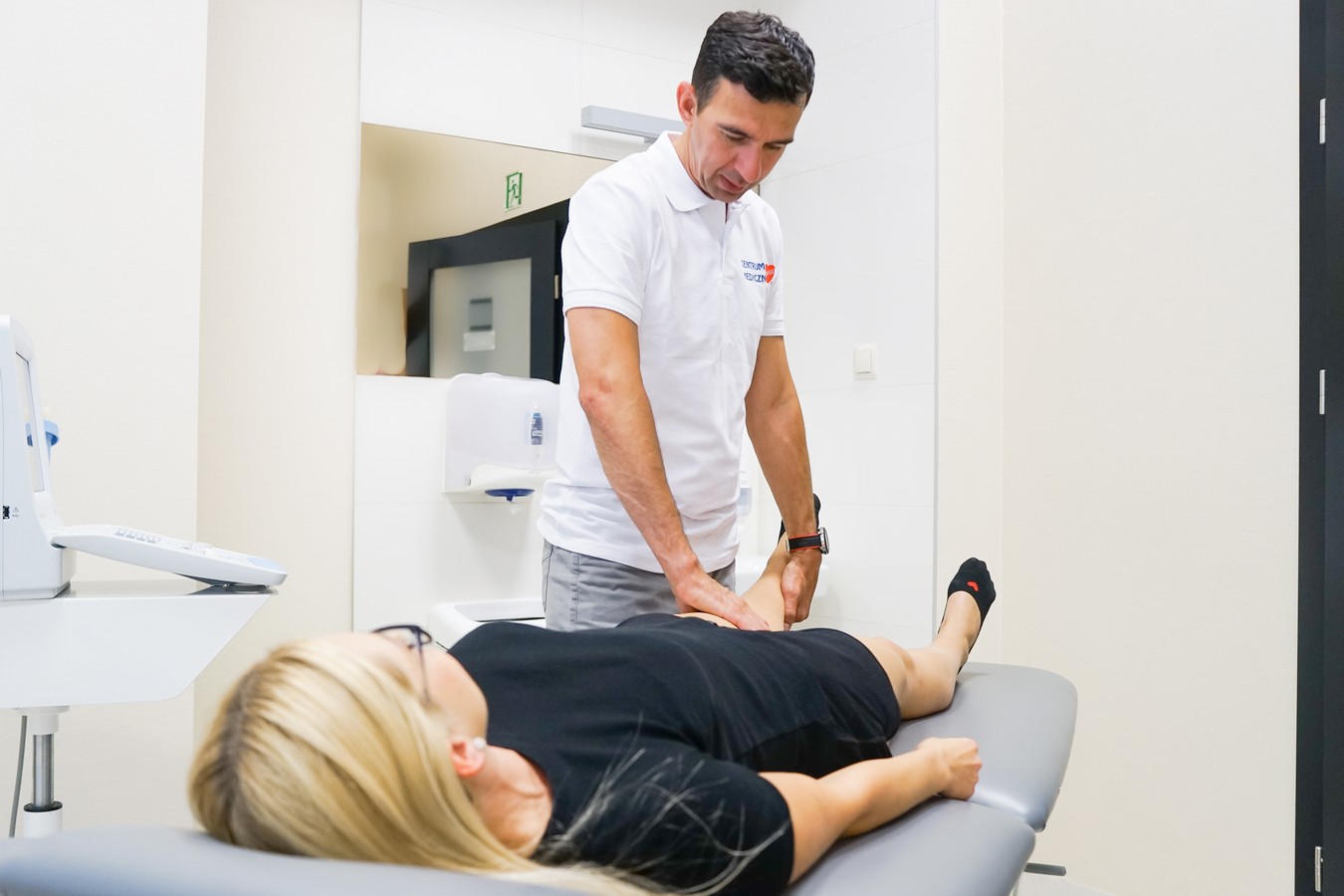Functional diagnostics
Physiotherapy diagnosis consists of several stages. The first stage is a thorough EXPERIENCE. It includes both the part about the Patient (where you can expect questions about profession, hobbies, history of past illnesses, injuries, surgeries, medications taken, and diseases in the family) and the part about the current health problem (i.e.: onset and region of occurrence and severity of pain, limitations resulting from pain). The second stage is the EXAMINATION of the patient, which consists of observation of the patient in both static positions (standing, sitting posture) and dynamic positions (gait, movement during change of position), diagnostic tests performed by the physiotherapist (i.e.: assessment of muscle strength, mobility ranges, sensory testing, patient measurements), palpation examination (assessment of muscle tension, painful points in the body, tissue mobility). Diagnosis also includes interpretation of imaging studies (X-ray, KT, MRI) in relation to the problem with which the patient reports.
Physiotherapeutic diagnosis involves treating the human body holistically, i.e. as a structural and functional whole in which the individual elements are interdependent, and looking for the cause of the disease, rather than just identifying the ailments present at the time of the examination. It is important to note that chronic pain and limitations in activities of daily living are strongly influenced by other conditions, past injuries, as well as lifestyle and, above all, posture.
Conclusions that the physiotherapist, thanks to his knowledge of the human body, is able to draw during the first visit make it possible to rule out contraindications and determine the purpose of therapy. Then, thanks to this, the optimal physiotherapy can be planned for the patient.
What the patient can expect during the diagnostic visit:
- very thorough questions about health conditions, other associated conditions, hereditary diseases in the family;
- questions about posture, the exertion of the job, how free time is spent after work and the overload that can then occur;
- questions about architectural obstacles that the patient encounters such as stairs, less ergonomic furniture in the house, necessary assistance from other people;
- Observing the Patient’s physical symmetry while dressed and in underwear;
- Palpation (touch) examination of skin, muscles, joints;
- Performing tests passively (only through the effort of the therapist) and actively (with the participation of the patient);
- sometimes (if necessary) induce pain sensation in the patient to test nerve function;
- palpation or testing of parts of the body other than the painful area reported by the patient.

| Rzeszów, al. Rejtana 53 (3 piętro) tel. 17 865 20 06 |
| Rzeszów, ul. Łukasiewicza 88 tel. 533 349 029 |
| Łączki Kucharskie 248 tel. 17 865 20 99 |
| Mielec, ul. Partyzantów 21 tel. 17 788 92 26 |
| Dębica, ul. Kwiatkowskiego 1 tel. 509 890 297 |
| Jasionka 954F tel. 17 865 20 92 wew. 2 |